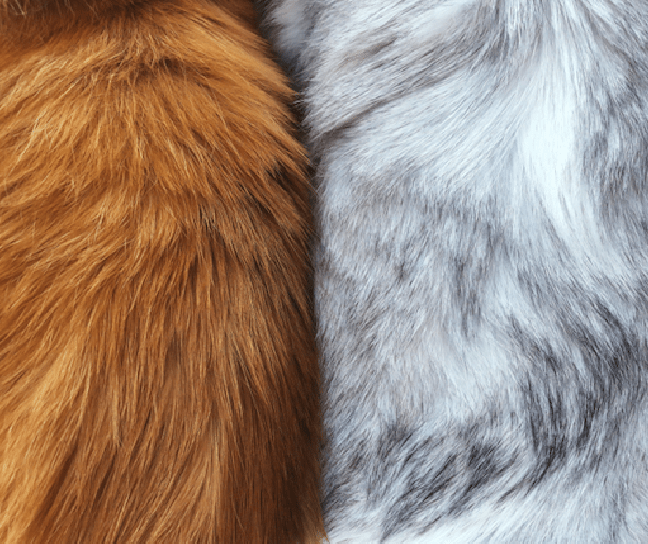Is using fur in fashion morally wrong or a sustainable alternative?
Fur has been used in fashion for a long, long time. The exact date for when it was first used in clothing is still contested. Regardless, it has been used in many different clothing items in countries all over the world for hundreds of years which begs the question of whether fashion is truly timeless.
From the fourteenth to the seventeenth century, fur was used for clothing garments belonging to the aristocratic and clerical elite. It was a source of social status and wealth but also to establish the absolute hierarchy in society. Wearing something made of fur allowed people to proclaim a more refined identity. Particularly exclusive furs included marten, fox, and ermine
Fur continued to be used as an identity mark for the elite in the nineteenth century. Even in the twenty-first century, a long fur coat is subject to luxury and material wealth.
Fur has also had huge economic impacts on countries
While importing and using fur for fashion can be claimed as an outcome of excess capitalism, fur has always been central to many societies for survival. Fur was and still is, used in some of the harshest climates around the world due to its “outstanding thermal qualities”.
Many of these places regions have difficult climates and fur is used because of its availability and ease. Fur has also had huge economic impacts on countries – take Canada for example. This fur trade from 1670-1870 transformed fur clothing in its entirety to a huge business that shaped Canada into the land today.
The fur trade, however, has since been exposed for its slaughtering nature and the Charity PETA has the opening statement on their website as: “Animals are not ours to wear or carry our possessions in. Before their skin or hair reaches shop shelves, animals endure a life of misery, pain, frustration, and fear, and many are skinned alive.”
The UK still allows the product to be imported from overseas, but this is to be banned after Brexit
This revelation of the truth of fur has since made brands, teams and designers find alternative vegan fashion alternatives. Designers which have huge impacts on the fashion world morals have changed the face of fashion.
Giorgio Armani made an agreement with ‘The Fur Free Policy’ which meant from the Autumn-Winter 2016/17 season, all products made with animal fur were to be removed. Stella McCartney has pioneered the world’s first faux fur made by bio-based fur. These brands showing their discontent toward the fur industry is creating a world of fashion which is free from animal cruelty.
Despite fur farming being banned in 2003 and brands advocating for fur-free fashion, the UK still allows the product to be imported from overseas, but this is to be banned after Brexit. Lord Goldsmith, the Government’s animal welfare minister, is supposed to be fronting the move. However, there are still charities and groups who support animal fur.
PETA explains that fur farming, like all other factory farms, has little regard for welfare or environmental impact
The British Fur Trade Association (BFTA) is the voice of the UK fur sector and claims that fur is “part of the natural, ‘slow’ solution to ‘fast’ fashion”. It is true that fur is a sustainable material which can not only last for decades, but it biodegrades into biofuels and fertilisers, but is it also true that killing animals for fashion is morally acceptable?
The BFTA highlight the importance of the environmental impacts of fast fashion and the sustainability of faux fur. Faux fur, like plastic bags, can take between 500 to 1,000 years to biodegrade.
Two opposing sides argue back and forth about the environmental impact of fur and faux fur. PETA explains that fur farming, like all other factory farms, has little regard for welfare or environmental impact. They use the example of minx farming which generates “tonnes of phosphorus-containing faeces which can run into nearby streams and rivers and cause harmful emissions of nitrous oxide and ammonia”.
It is important to move away from animal cruelty
Nobody can deny that skinning animals alive is hardly an act of morality or humanity, especially when we are referring to first world countries with countless other material alternatives.
Real fur is expensive but the realities of buying a new luxurious fur coat are anything but glamorous. Although a fur coat is a symbolic fashion statement and is the ‘perfect’ garment for cold winter months, it is important to move away from animal cruelty and stop using the excuse of “I will never get rid of it”.
Everyone has their opinions of the use of fur in fashion so it is down to you to make your own judgement whether you will wear fur, advocate against it, approach those wearing fur or simply remaining silent about fur in fashion. Fashion is an ever-growing industry which will never be removed from society, but it can become a more sustainable industry in the light of climate change and ethical philosophies.

Comments (1)
This is okay but it doesn’t have the information I need and more about we should ban from using fur as coats.